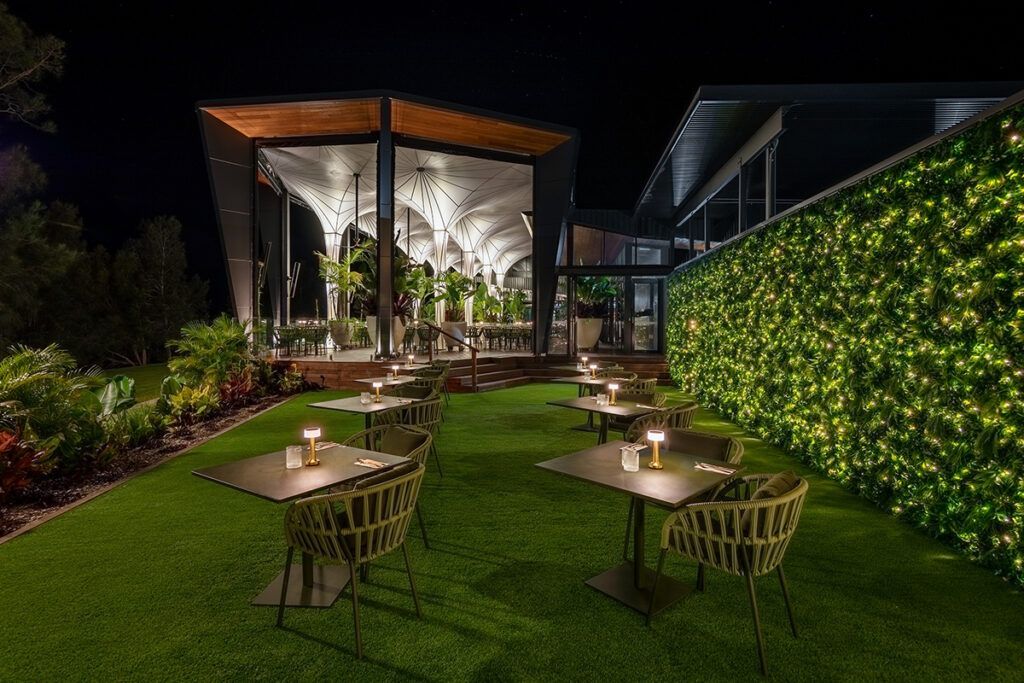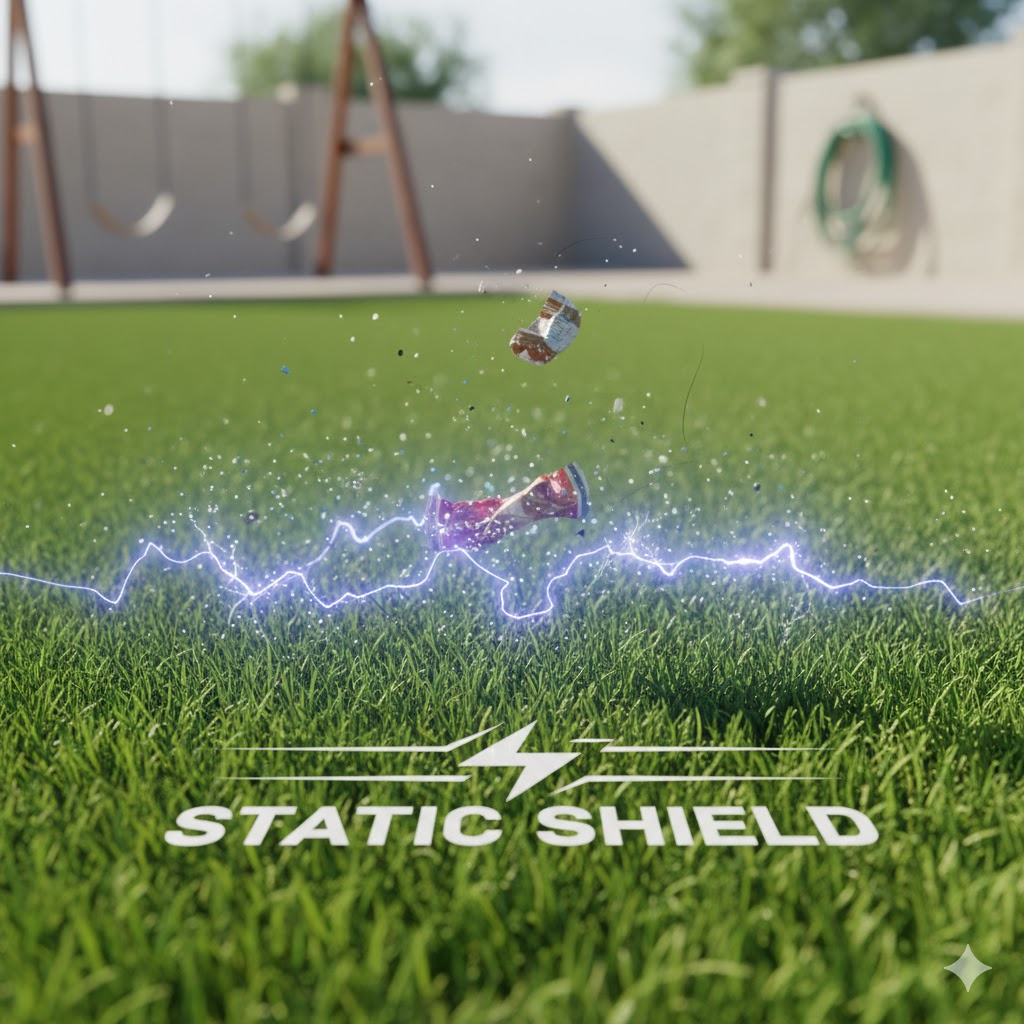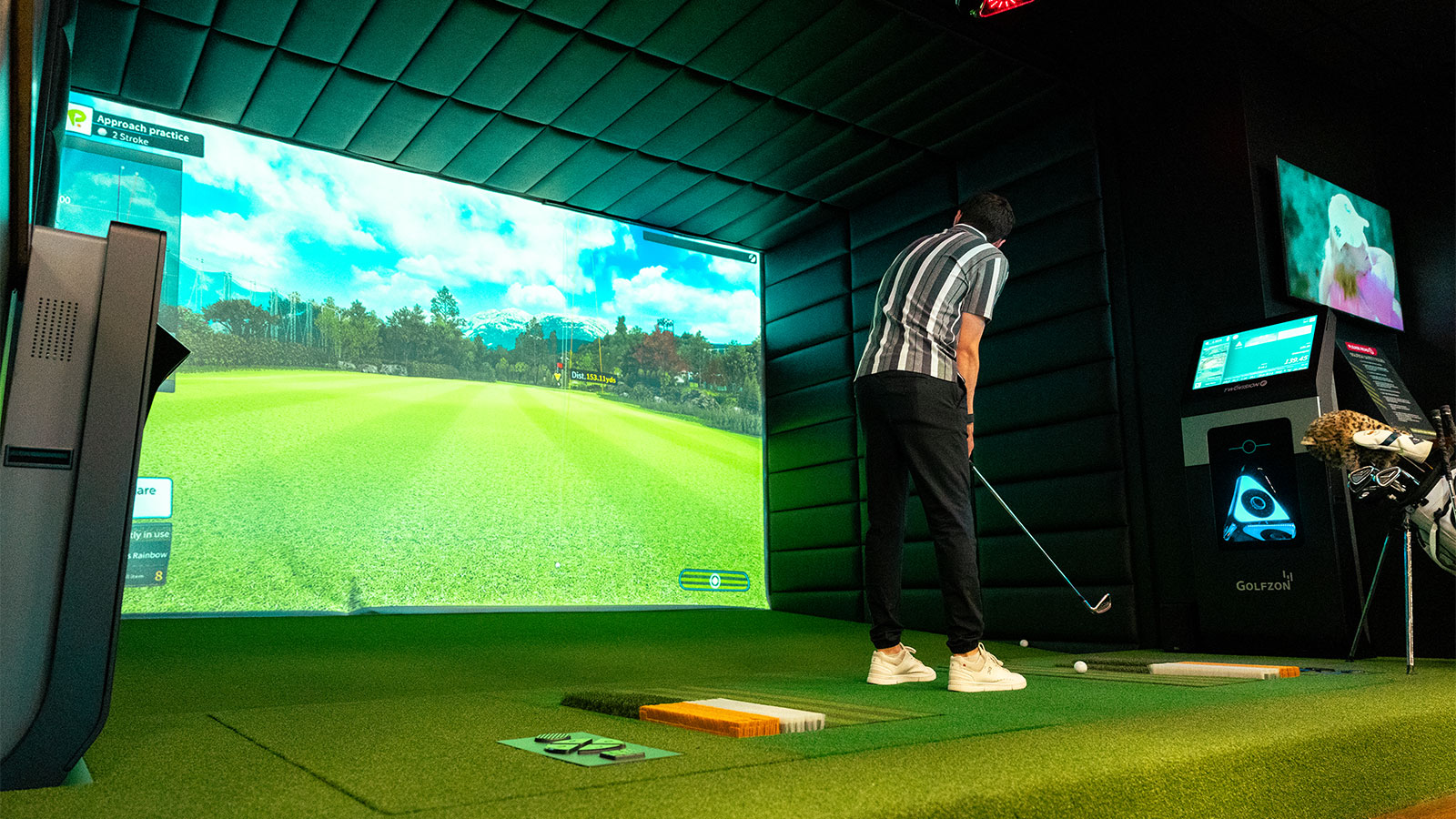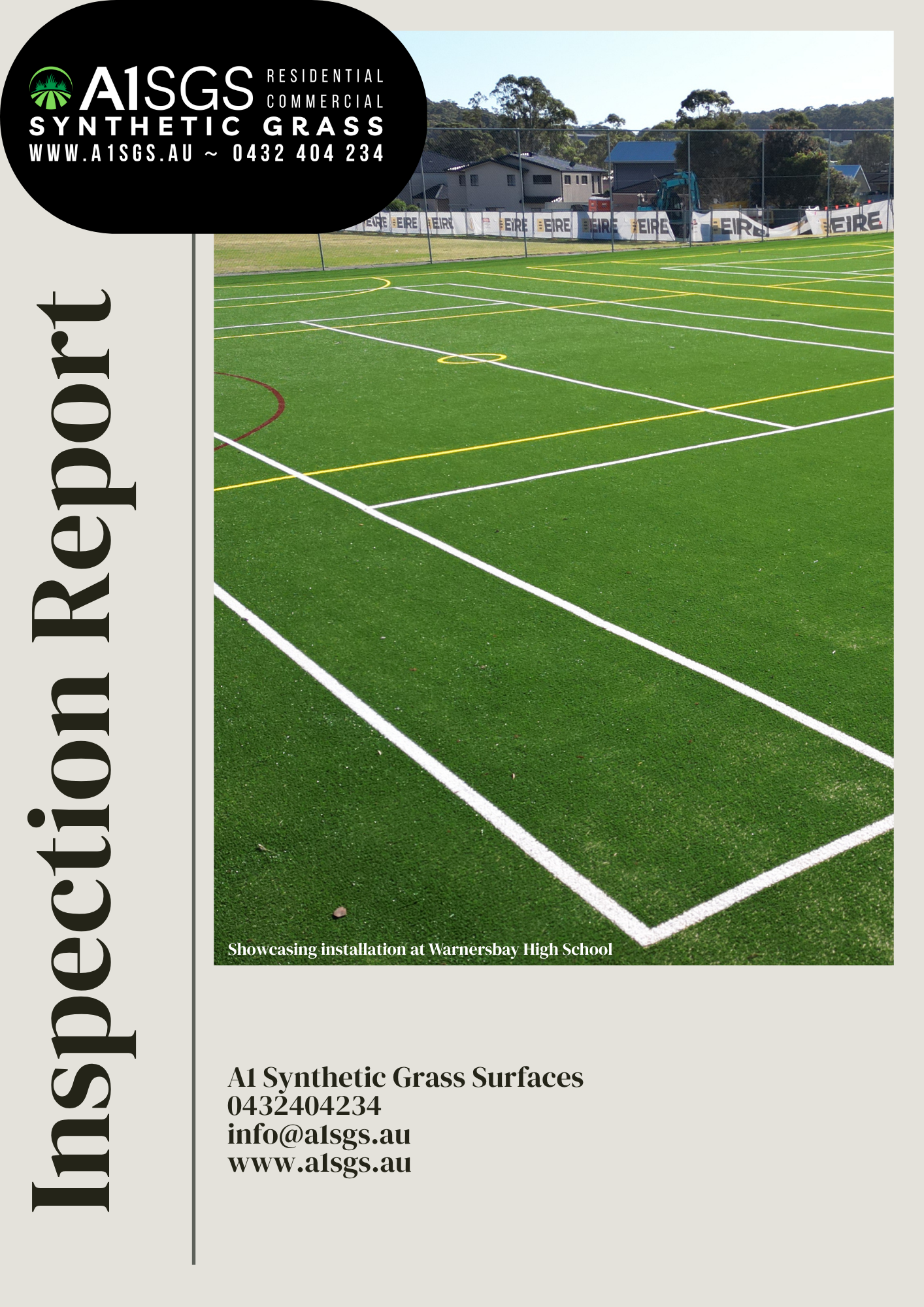Complete Step by Step on Installing Synthetic Grass
Our expertise is transforming ordinary lawns into vibrant, eco-friendly environments that require minimal upkeep. We are the one-stop shop for all supplies needed to support your installation process. As industry experts we can give you our support and guidance to aid in the installation process, providing you with key information and quality tips on how to get your job looking amazing.

Installation is not difficult, but it is important to perform each step in the process properly. Turf rolls are heavy, so make sure you have help and take care when moving them into position.
Adhesives used for taping seams or for gluing down turf may affect some people who have allergies, so always wear gloves and eye protection, avoid breathing fumes or getting the glue on your skin.
Ideal conditions for performing the installation are warm sunny days with reasonably dry earth to make levelling smooth easy. Weeds rarely penetrate the turf, but an optional weed barrier, which also contains anti-bacterial qualities, is recommended for all lawns. Occasionally, airborne seeds may take root if conditions are ideal, particularly in sand-filled installations, but they are easily pulled out because the roots will be unlikely to penetrate the turf base layer.
Pre-Installation Planning
Choosing a Product: The following considerations can guide you to making a choice Surrounding Landscape.
• Take into consideration the blade colours that will blend in with native grasses/plants.
• Tan thatch or all green thatch is available for a more realistic or healthy appearance.
Pet Use
• Products with rapid draining backing are most effective for allowing the flow of liquids through to the sub-base.
• Dogs that like to dig may require the stiff/ durable yarn fibre options.
• Odour neutralizing products such as enzymes are recommended in conjunction after the installation.
Traffic
• High traffic areas: Shorter pile height with higher fibre weights and stronger “micron” blade fibres, or taller heights with higher fibre weights are recommended
• Low traffic areas: Any product is suitable, short or tall, lower fibre weights are more cost effective and may save money while still maintaining an aesthetic value.
Texture
• Soft Blades: Good for small children or low use areas. Maintenance with rake/stiff broom will be required more often to keep softer blade fibres upward. Additional sand infill may be necessary for added durability.
• Stiff Blades: Provides better durability and sustainability of blade fibres standing up on their own, ideal for heavy use areas.
Drainage
• Perforated polyurethane backing for standard drainage is adequate for most jobs.
Ordering/ Delivery of Turf.
• Determine square meterage of area
• Design layout of turf and determine roll size
- Standard roll size is always 3.75 wide, length is TBD
- Allocate 100mm on perimeter for “room for error” while cutting
- Consider excess material that can be used in other areas
• Calculate weight for offloading and moving (can be heavy)
• Speculate if special equipment such as forklift or bobcat is required for manoeuvring material or whether there be extra hands-on site to assist.
Develop Site Preparation/ Removal Plan
• Existing Soil Conditions Evaluation: Determine type for proper preparation method
• Existing Irrigation: Will you cap off/shut down or remove?
• Inspect for signs of rodents to include barriers to prevent them from burrowing
• Contact Dig Alert: To determine if utility lines may be underground.
• Tree Roots: Will they need to be pruned, tree rings installed, or base be elevated?
• Inspect for window reflections: Have windows tinted if sun is reflecting on grass.
• Edging: Are edges exposed? What meterage of containment is needed?
• Determine meterage of edging required (H4 sleepers is a very popular and durable choice)
• Allow area to dry out for a few weeks and encourage grass to die for easier removal
Tools and Equipment
The tools and equipment listed are required for installation.
Wheelbarrow: For moving sand, water, sub-base, etc. around
Shovel(s): For loading and unloading sand, gravel, rubber, etc.
Rake(s): For spreading and levelling the substrate and the underlay
Stiff Nylon Yard Brush(es): For working in and spreading the optional sand in-fill
Compactor: A petrol powered vibratory plate compactor for compacting the substrate and sub-base for smooth, level results
Hammer(s): For driving galvanized nails to hold turf in place (optional)
Power Brush or Broom: For fluffing the pile prior to infilling (optional)
Utility Knife: For cutting turf.
Carpet Shears: For trimming fine edges
Carpet Kicker: For tightening turf and removing wrinkles (optional)
Leaf Blower: For cleaning up surrounding area
Tape Measure: For measuring
Seed Spreader: For spreading sand infill and Zeolite (optional)
Skip Bin (optional): For disposal of removed earth, sod, and excess materials
Materials required
Always use the recommended materials to ensure a satisfactory installation.
Crushed blue metal dust (Quarter minus): 70mm of quarter minus to provide a firm, yet porous underlay. This product compacts well, but allows permeability.
Kiln Dried Sand: Used as an infill material to minimize flattening and weigh the turf down on the underlay. Not recommended for sloped areas.
Zeolite: (Optional) A naturally occurring mineral composite that reduces odour caused by pets. To be applied on top of sub-base and combined with sand as infill on pet applications.
Seam Tape: 300mm wide tape is used to join the seams or where a repair is necessary
Seam Glue: The adhesive recommended for use with the seam tape. A1SGS Glue 4L tub will cover approx 30 metres at 150mm width with a 4mm trowel.
Screws (optional): Screws used to hold down the outer edges of the turf around the perimeter when turf is screwed into place on a perimeter edging board. Screws can be removed easier than nails if the turf needs to be pulled tighter due to rippling.
Flat head galvanized nails: Used to pin down the turf into firm base material – to be used in 300mm intervals.
H4 sleeper Edging Board (optional): 50mm thick boards to be laid around the perimeter of the installation flush with the underlay to nail the outer edges of the turf to prevent creep (rippling) or curling in high use areas or when deemed necessary. Turf should be screwed or nailed into the edging board to allow for tightening of material if rippling occurs or when expansion/contraction occurs.
Sprinkler System Caps: To cap the sprinkler system when the heads are removed and the system shut off.
Site Preparation
The preparation of the surface will vary depending upon use and drainage requirements.
Typically, the following procedure is employed.
Dig Alert: Buried utilities can exist just about anywhere on your property. You can prevent damage to underground utilities by calling ‘Dial before you dig’ two (2) business days prior to starting your excavation. This is a 100% free service, and more importantly- it's the law.
Sprinkler System: Turn the system off at the source and remove the sprinkler heads. Cap the pipes. Turn system back on and run to test system for leaks if caps are not tightly secured.
Removal of existing surface: The existing grass and approximately 70mm-100mm (based upon height of turf chosen) of loose topsoil is to be removed and disposed into a lowboy dumpster, down to undisturbed earth. Where the topsoil is reasonably compacted it can be left. The substrate needs to be firm so that it doesn’t move around under the turf, creating humps and valleys or collecting drainage water.
Substrate: The existing substrate of soil, clay, sand, etc., is to be raked and levelled to the required contours, and any protruding large rocks, roots or litter removed. Use a compactor to pack the surface firmly enough – ideally to 90% compaction - so that it will not move around under the turf.
Perimeter Edging Board: Lay vertically around the perimeter of the area to screw and/or nail the outer edges of the turf to. Preferably use H4 sleepers because it will not rot and screws will hold in well. Cut it into small sections to go around curved edges, filling in the gaps with the underlay material. Lay it so that the top surface is level with the adjacent areas or curbs by building the quarter minus around the board which creates a flush sub-base.
Containment: Where the perimeter of the turf area meets trees, plants, flower beds, mulch, etc, and is curved, 30mm H4 sleepers can be used to define the area. Lay close to it for a more secure and taught installation, whenever applicable.
Sub-Base: The first step is to lay a blanket of weed barrier onto the substrate (on top of the tamped soil and below the aggregate base if needed).
Depending upon the composition and condition of the substrate, 70mm of underlay material is recommended.
For example, if the substrate is clay or extremely hard, packed soil, it will not drain on a level surface. A layer of Road Base will need to be laid down and compacted to provide drainage. The amount (depth) of base material may depend on the stability and drainage of local soil conditions.
Based upon a 70mm thickness, to calculate the approximate volume in cubic metres of base needed, multiply the square meterage by .07 or consult with your local landscape yard for a more accurate estimate. Volume of base required will vary upon the vendor.
If drainage is an issue -Around the perimeter, the substrate should be dug out to a depth of about 200mm deep by 200mm wide, and then backfilled with the quarter minus to provide a drainage sump. Use quarter minus to bring the level of the surface up to the level of edging boards, adjacent surfaces, and curbs as required.
The sub-base density for landscape applications should be roughly 90% of the Standard Proctor Density.
Moving slowly, inch by inch, tamp the base material with the compactor. After 3 to 4 passes over the sub-base, you should achieve the desired compaction.
The moisture content of the sub-base material should contain approximately 12% water throughout, for the optimal result. Sprinkling with water will assist in achieving proper dampness and compaction.
Turf Installation
A1SGS synthetic turf is made of a directional material, therefore our Kiln dried sand infill is always recommended to help prevent the grass blades from lying flat. The Kiln dried sand infill is spread after the turf is installed. The infill also provides impact absorption and is a ballast to hold the turf in place. Infill is less desirable around pools, on sloping surfaces, or where the installation is for purely visual effect only and has moderate foot traffic.
With the underlay prepared, the edging board in place and the entire area compacted and tamped smooth and firm, work out your lawn layout.
Keep the layout as simple as possible, with as few seams as possible. Measure the width of the roll of turf. Check your roll and see if it comes with a border of fabric along one or both edges extending a couple of inches beyond the last row of turf. This border will have to be trimmed off with a carpet knife between the last row of turf tufts and the next one in. When you know the width of a roll decide which way you will run it out on your lawn area.
Roll out the turf in a sunny, spacious area to allow for expansion to occur and to let the blades open up. This extra step is a preventative measure to prevent rippling after installation.
Turf is best viewed against the grain, that is, with the grass bending towards you. The turf lays down across the roll, along the line of the stitching, so, if you wanted the best view to be from your living room windows, you would lay the turf facing the windows.
Standard Installation
- If you have room close by, roll the turf out to the length of your first strip. If you can, work off your new lawn surface to avoid disturbing your newly levelled and tamped surface.
- Fold the material onto its back and using the carpet knife, cut in between stiches the length of your first strip. Take precaution in cutting between stiches, rather than across, as this can damage and loosen the blades on top, causing balding.
- If the turf has a fabric border still attached, trim it off between the first and second row of stitching. Work from the back so you can see what you’re doing.
- Roll it up again and carry the roll onto the new lawn surface. Place the roll at the end of your first row and carefully roll it out without disturbing your underlay.
- Move it into position, pull it tight, and trim around any shrubs, trees, utility boxes, paths etc with the utility knife. Don’t trim it too close at this point, you need to leave some material to trim off if necessary when the turf is nailed down and stretched.
- Allow the turf to relax for an hour or more in the warm sun before carrying on. This allows time for the material to open and expand. In the meantime you can measure and cut your next strip of turf, trim the border, and fit it around any obstacles.
- Starting in a corner, use a nail at the perimeter edge of the turf to the edging board every 300mm. Work across the end first, pulling the turf tight as you go. Leave about 300mm at the unnailed.
- With the end secure, pull the turf tight lengthways, using the carpet kicker to help pull it out, then pin it down along the edge lengthways.
- Pin across the other end, pulling it tight and again leave about 300mm free at the end.
- Place the second row of turf beside the first one, positioning it so the edges just touch with no overlap.
- Pull one end tight across the roll and pin the centre part, leaving 300mm at each end.
- Pull the strip tight, again using the carpet kicker if necessary and nail the other end the same way, making sure the long edges are still just touching.
- Repeat this procedure until your lawn is complete.
- Return to the first strip and fold the long edge back about 300mm (which is why you didn’t screw down the end!) Then fold the second, adjacent strip back 300mm also.
- After cutting edges, lay a strip of carpet tape - typically about 300mm wide - the length of the strips and centred between them. Hold or temporarily nail the ends down to the underlay so it doesn’t move around as you apply the outdoor grass adhesive. Keep in mind that expansion and contraction occurs at seams, so allow just enough material to prevent a gap or overlap (Allowing material to breathe prior to install allows it to expand).
- Apply 150mm width of adhesive to the seam tape or as according to the instructions on the container.
- With someone at each end, holding the strip tight, lay the first strip down onto the carpet tape. Press it down. Lay the second strip down the same way.
- Pin the ends down. Insert 150mm galvanized nails about 300mm apart throughout the turf to hold it down. Be sure to place the nails between tufts so they are invisible and less easily contacted.
- Repeat this process for the entire area. Install more pins in high traffic areas.
- Now take the power carpet brush or stiff yard brush and brush the entire area to raise the strands and fluff them up.
- If using Kiln dried sand infill, add 15kgs of infill per square metre. Sand infill should not exceed this depth and should remain unseen from the top of the blade. Start in one corner and distribute the infill with a shovel or seed spreader onto the turf. Place it to approximately the required depth as you go so you don’t flatten the turf again as you walk on it.
- Have one person spread and distribute the sand while a second person uses the stiff yard brush to work it down into the turf. The brushing action will keep the tufts upright as the infill settles to the bottom. Keep adding material until you are satisfied with the amount in place, then move on. When the entire area is filled and brushed in, you’re done!
NOTE: Save any leftover pieces in case you need to repair a damaged area in the future.
Bonus Content
Need lines in your synthetic turf? Check out our video below




